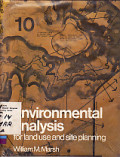
Environmental Analysis: For Land Use and Site Planning
Studying the environment, planning for land use, and designing structures in it is a complex process, calling for the skills of planners, landscape architects, civil engineers, natural scientists, …
- Edisi
- Ed. 1, Cet. 1
- ISBN/ISSN
- 0-07-040490-9
- Deskripsi Fisik
- ix, 292 hal.; ilus.; 22,2 x 28,5 cm.; indeks.
- Judul Seri
- -
- No. Panggil
- 333.73 MAR e
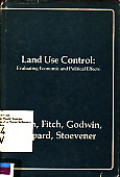
Land Use Control: Evaluating Economic and Political Effects
Public programs to intervene in the private land use market are designed to achieve land use and distribution of costs and benefits much different from those which would prevail under market condit…
- Edisi
- Ed. 1, Cet. 1
- ISBN/ISSN
- 0-88410-062-6
- Deskripsi Fisik
- xvii, 184 hal.; 15,7 x 23,4 cm.; indeks.
- Judul Seri
- -
- No. Panggil
- 333.73 ERV l
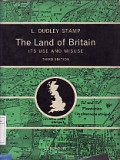
The Land of Britain its Use and Misuse
Though the field. work of the Land Utilisation Survey was mainly completed in the three years 1931 to 1933 (as shown on Fig. 2, p. 9) and statistics based on its findings are best compared with off…
- Edisi
- Ed. 3, Cet. 1
- ISBN/ISSN
- -
- Deskripsi Fisik
- viii, 546 hal.; ilus.; 22,5 x 28,5 cm.; indeks.
- Judul Seri
- -
- No. Panggil
- 711.42 STA t
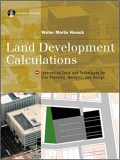
Land Development Calculations: Interactive Tools and Techniques for Site Plan…
This next-generation for land development professionals offers. 40 interactive spreadsheets covering residential, nonresidential and hybrid categories of land use development. Case studies, with ph…
- Edisi
- Ed. 1, Cet. 9
- ISBN/ISSN
- 0-07-136255-X
- Deskripsi Fisik
- xviii, 621 hal.; ilus.; 19 x 24 cm.; indeks.
- Judul Seri
- -
- No. Panggil
- 333.7 HOS l
Urban Land Economics and Public Policy
As a reflection of the change in the UK's economic strategy in recent years, this revised edition considers public policy in greater depth than previously with the inclusion of a chapter on welfare…
- Edisi
- Ed. 4, Cet. 3
- ISBN/ISSN
- 0-333-46378-1
- Deskripsi Fisik
- xv, 344 hal.; ilus.; 16 x 23,5 cm.
- Judul Seri
- -
- No. Panggil
- 333 BAL u

The New Transit Town: Best Practices in Transit-Oriented Development
Transit-oriented development (TOD) seeks to maximize access to mass transit and nonmotorized transportation with centrally located rail or bus stations surrounded by relatively high-density commerc…
- Edisi
- Ed. 1, Cet. 1
- ISBN/ISSN
- 978-1-55963-117-4
- Deskripsi Fisik
- xvii, 255 hal.; ilus.; 19,6 x 22,3 cm.; indeks.
- Judul Seri
- -
- No. Panggil
- 711.4 DIT t
Land-Use Changes in Comparative Perspectives
This book is a result of the Commission on Land-Use/Cover Change of International Geographical Union summer workshop in 2000 held in Japan and Korea, which focused on comparative case studies of la…
- Edisi
- Ed. 1, Cet. 1
- ISBN/ISSN
- 1-57808-213-7
- Deskripsi Fisik
- xiv, 262 hal.; 16 x 24 cm.; indeks.
- Judul Seri
- -
- No. Panggil
- 333.7 HIM l
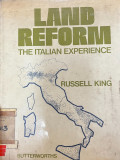
Land Reform: The Italian Experience
This study examines the land reform process in Italy, focusing on its historical context, implementation, and outcomes. The Italian land reform, primarily occurring in the mid-20th century, was dri…
- Edisi
- Ed. 1, Cet. 1
- ISBN/ISSN
- 0-408-70472-1
- Deskripsi Fisik
- 257 hal.; 19 x 25,5 cm.; indeks.
- Judul Seri
- -
- No. Panggil
- 333.31 KIN l
Economics & Land Use Planning : Real Estate Issues
The book's aim is to draw together the economics literature relating to planning and set it out systematically. It analyses the economics of land use planning and the relationship between economics…
- Edisi
- Ed. 1, Cet. 1
- ISBN/ISSN
- 1 - 4051 - 1681 - X
- Deskripsi Fisik
- xii, 209 hal.; ilus.; 15,2 x 22,8 cm.
- Judul Seri
- Real Estate Issues
- No. Panggil
- 333 EVA e
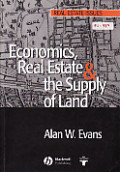
Economics, Real Estate & the Supply of Land
The book draws together the economic literature relating to the supply of land for development. The standard view appears to be that the owners of land have no interest other than to allow their la…
- Edisi
- Ed. 1, Cet. 1
- ISBN/ISSN
- 1-4051-1862-8
- Deskripsi Fisik
- xiii, 258 hal.; ilus.; 17,1 x 25 cm.
- Judul Seri
- -
- No. Panggil
- 333 EVA e
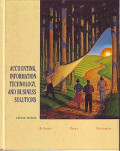
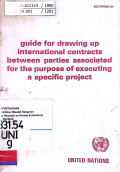
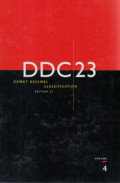
 Karya Umum
Karya Umum  Filsafat
Filsafat  Agama
Agama  Ilmu-ilmu Sosial
Ilmu-ilmu Sosial  Bahasa
Bahasa  Ilmu-ilmu Murni
Ilmu-ilmu Murni  Ilmu-ilmu Terapan
Ilmu-ilmu Terapan  Kesenian, Hiburan, dan Olahraga
Kesenian, Hiburan, dan Olahraga  Kesusastraan
Kesusastraan  Geografi dan Sejarah
Geografi dan Sejarah